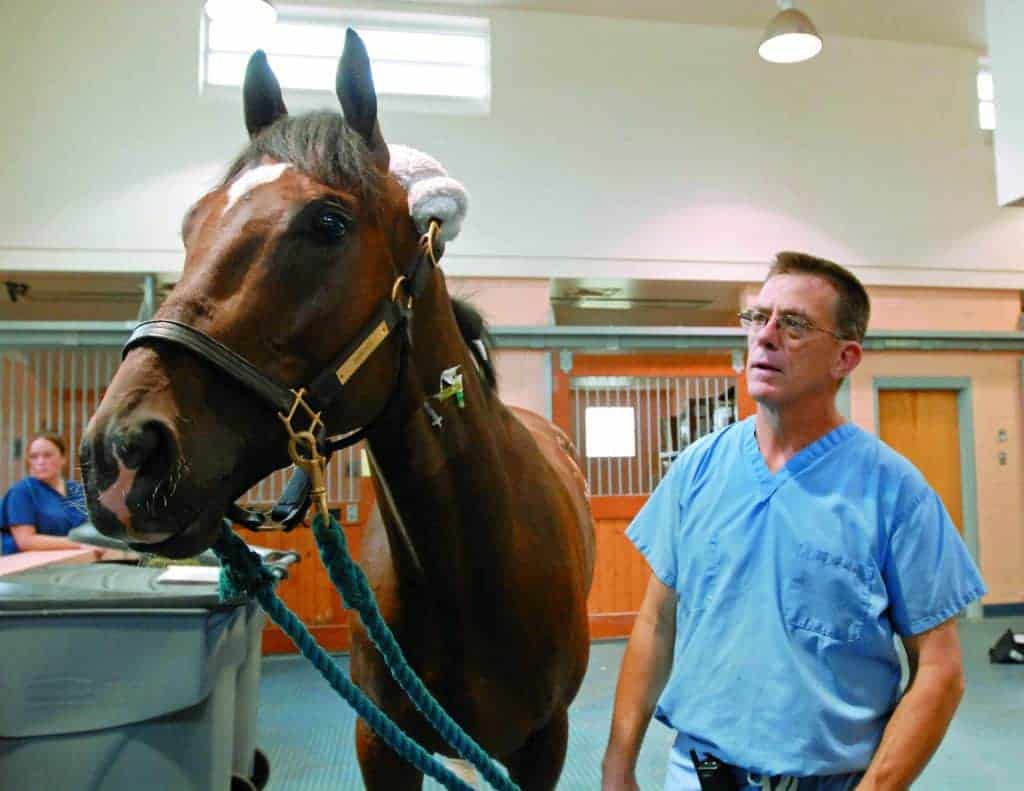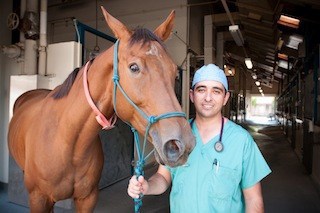Coleman, Page Recipients of EQUUS Foundation Research Fellows
The awards emphasize the importance of assisting researchers in their exploration of horse health topics.
Laminitis (commonly called “founder”) affects an estimated 7-14% of the world’s equine population. It’s the inflammation of the tiny, interwoven lamellae that attach a horse’s hoof to the underlying coffin bone (third phalanx, or P3) and support the horse’s entire body weight. Anything that impacts the integrity of the lamellae, such as inflammation, weakens their hold. This causes the coffin bone to displace within the hoof capsule and move toward the ground. The condition is very painful and is often life-threatening to horses.
The same disease has several different causes, which include:
The awards emphasize the importance of assisting researchers in their exploration of horse health topics.
The man allegedly rode the horse for miles, which caused injuries that necessitated the animal’s euthanasia.

Mr. and Mrs. Roy Jackson established the professorship after their horse Barbaro was treated at Penn Vet.

Veterinarians plan to conduct a trial of an experimental drug that has shown promise in treating laminitis.

EVJ has made a collection of laminitis research papers available online to both vets and horse owners.

The two-day program included presentations about podiatry, diagnostics, and treatments for laminitis.

Dr. Nora Grenager answers a user’s question about the human correlate of laminitis at the 2012 International Equine Conference on Laminitis and Diseases of the Foot. The answer might surprise you.

Veterinarian and farrier Dr. Raul Bras answers a user’s question concerning broodmares and laminitis at the 2012 International Equine Conference on Laminitis and Diseases of the Foot.

Dr. James Orsini shares the importance of bringing vets and farriers together to discuss laminitis at the 2012 International Equine Conference on Laminitis and Diseases of the Foot.

This year’s event features a horse owner program covering advancements in laminitis research and more.

Zayat, commenting Oct. 12, said the intent is to eventually return Paynter to training.

Steve Haskin shares his thoughts on racehorse Paynter’s multiple medical battles and his recovery.

Endocrinology researchers met to discuss equine metabolic syndrome (EMS) and equine Cushing’s disease (PPID).

Paynter has “beaten laminitis” and will be able to race again if he beats colitis, his owner said Sept. 21.
Don Walsh, DVM, answers questions about The 2012 Equine Endocrinology Summit and how it relates to laminitis.

The coordinators of the ongoing laminitis research project have expanded the inclusion criteria.
Stay on top of the most recent Horse Health news with
"*" indicates required fields